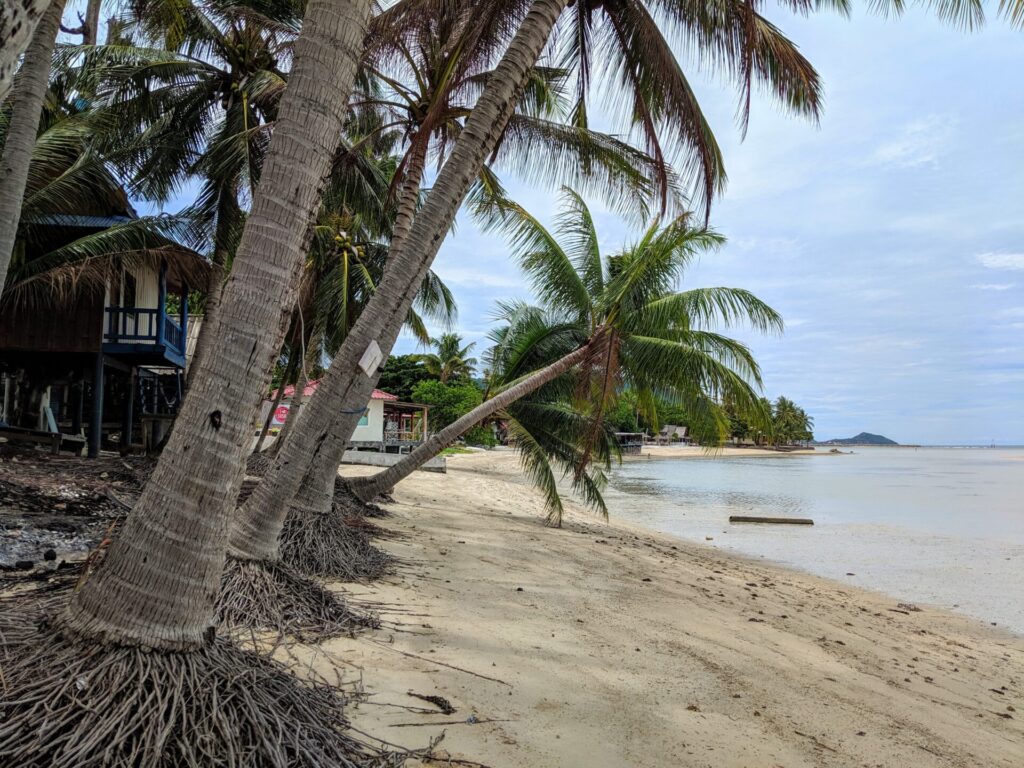
Foreign travel is nothing if not a continual learning experience. Travel in Thailand specifically, and Asia in general, is particularly different from Europe or Latin America. While I had been to Asia once before, it was a whirlwind trip of only ten days. Katie and I visited Hong Kong and Vietnam in February as our last official vacation before retiring. Therefore, the following learning experiences are from the perspective of someone who is mostly a novice to Asian travel and a complete newcomer to travel in Thailand. I had a lot to learn.
How to pronounce the “H”
In Thailand, when you see a word spelled with the letter H, you can safely ignore it 96% of the time when pronouncing it. The only time it changes the sound of the word is if it’s following a C, and then it’s a normal English CH sound as in choose or check. Chatuchak Market and Chiang Mai have the hard “ch” sound. Every other time, it’s not pronounced. Thailand is obviously pronounced tie land. Phuket is pronounced poo ket. Koh Phangan is ko paan gaan. We booked a few bus rides through Phantip Travel, pronounced paan tip. We stopped for a night to break up travel in Surat Thani, pronounced sir at taan ee.
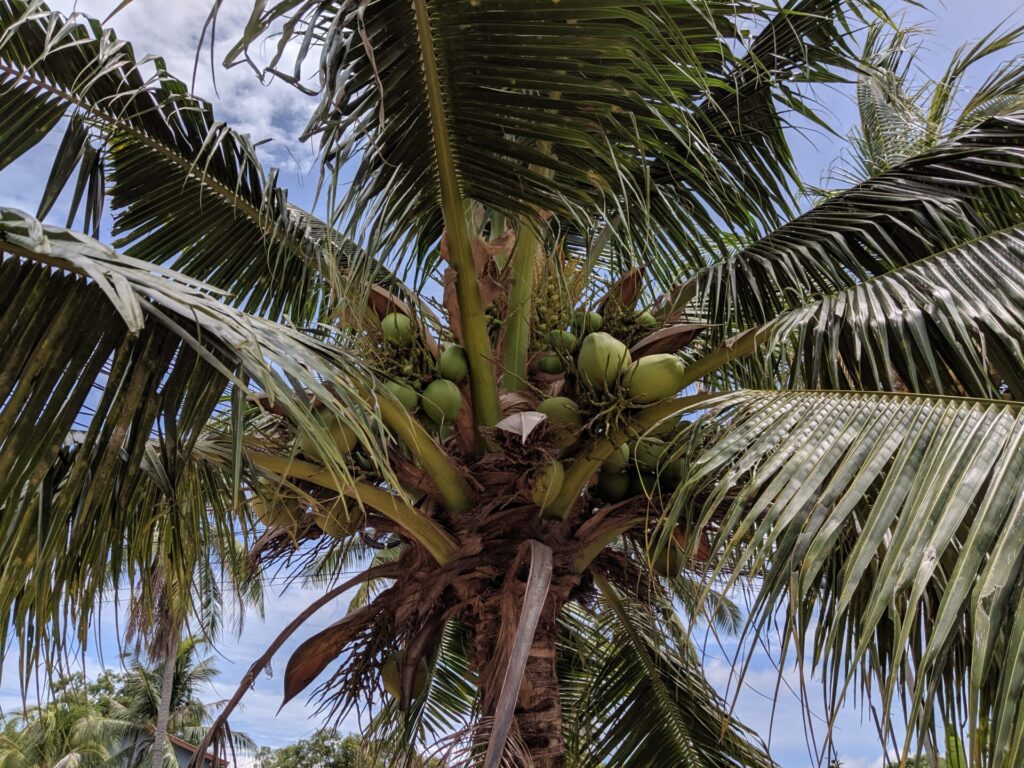
The same thing can be spelled differently
Because the English representations of the Thai words are just letters that make similar sounds, the same places and things are sometimes spelled differently. The best example I found was the Chatuchak Market in Bangkok was also spelled Jatujak on one sign. Sometimes you just have to sound it out.
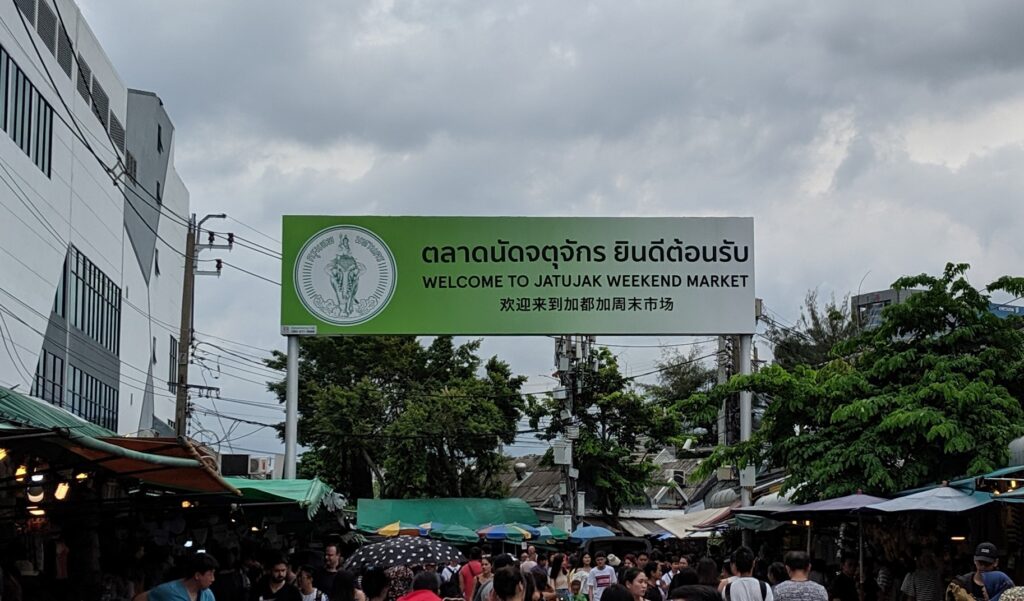
Similarly, because the H is not pronounced, words are sometimes spelled with the letters in a different order. Thailand’s currency is the baht (pronounced bot), but it’s common to see it spelled bath. Which seems weird to me, but to them it’s pronounced the same. This is not just on handwritten signs either, but also on professionally printed ones.
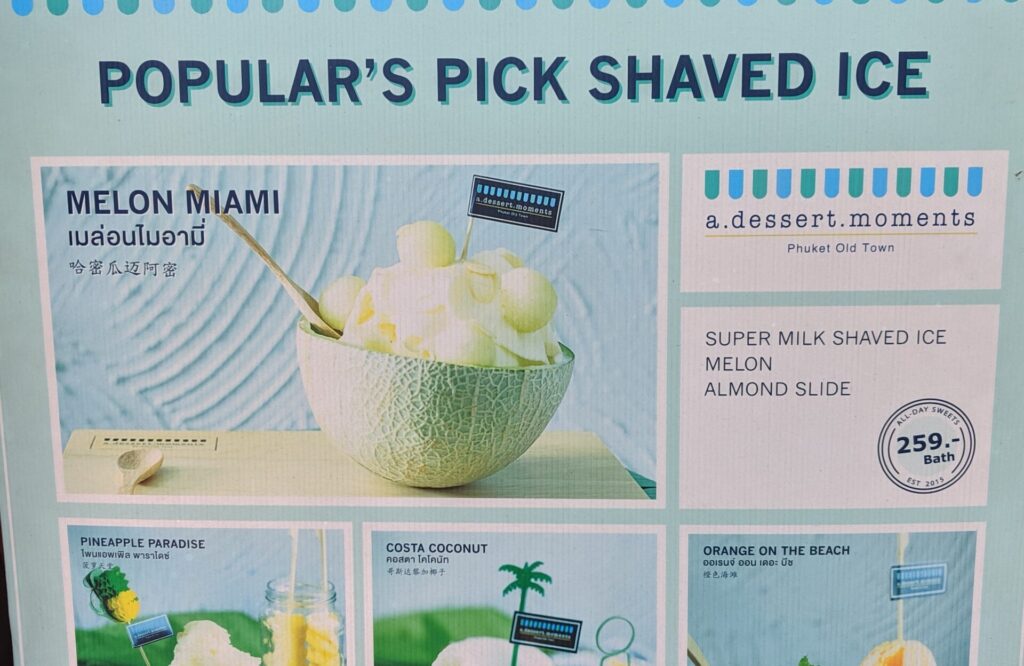
Koh Phuket
Speaking of how to pronounce Phuket, it seems to be the only island in Thailand that doesn’t have the Koh title in front of it. Koh simply means island, so all the islands have that title: Koh Samui, Koh Phangan, Koh Lanta, Koh Lipe, Koh Phi Phi. Despite being Thailand’s largest and most popular island, it’s almost never referred to as Koh Phuket. I saw it a single time on a bus destination sign in its front window. For some reason, it’s always just Phuket.
Popular skin products are made from unique ingredients
Outside of the dense urban areas, there are giant snails around that feast on the ample jungle vegetation. We found a handful of them when walking around after dark, and they are pretty cool. But they aren’t just for looking at. Products for your face, hair, and skin are all made using snail slime. It didn’t stop there either. You could get products with snake venom, horse oil, and even placenta extract. While I’m open to new things and ideas, I’m having trouble seeing the appeal of some of those.
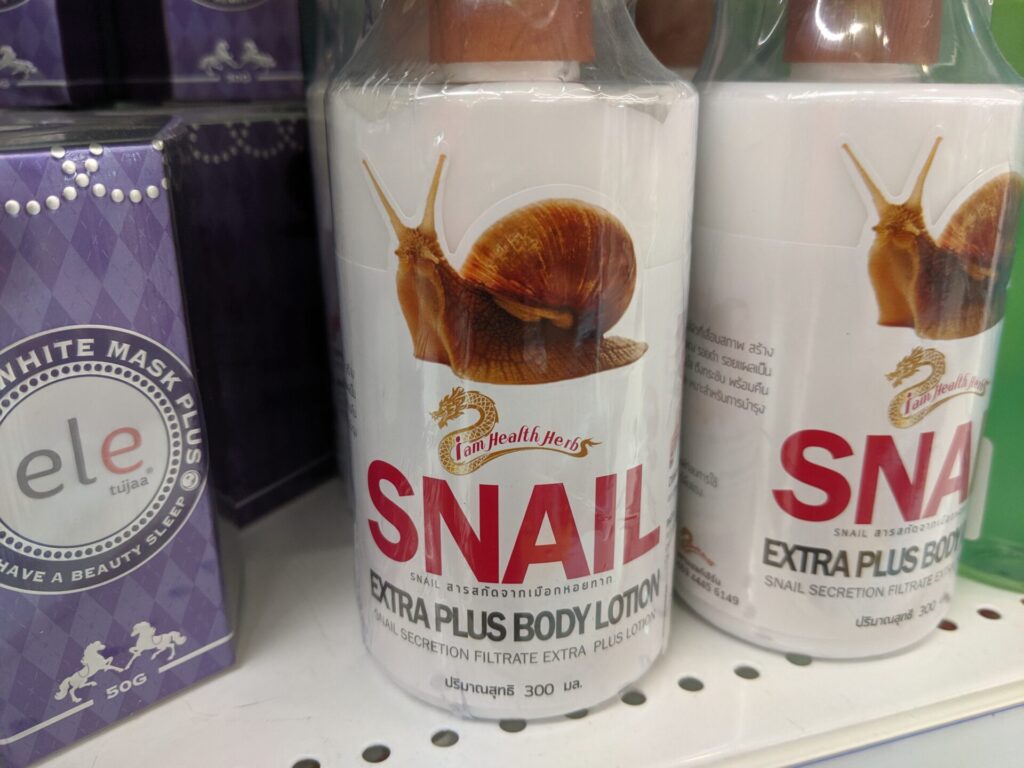
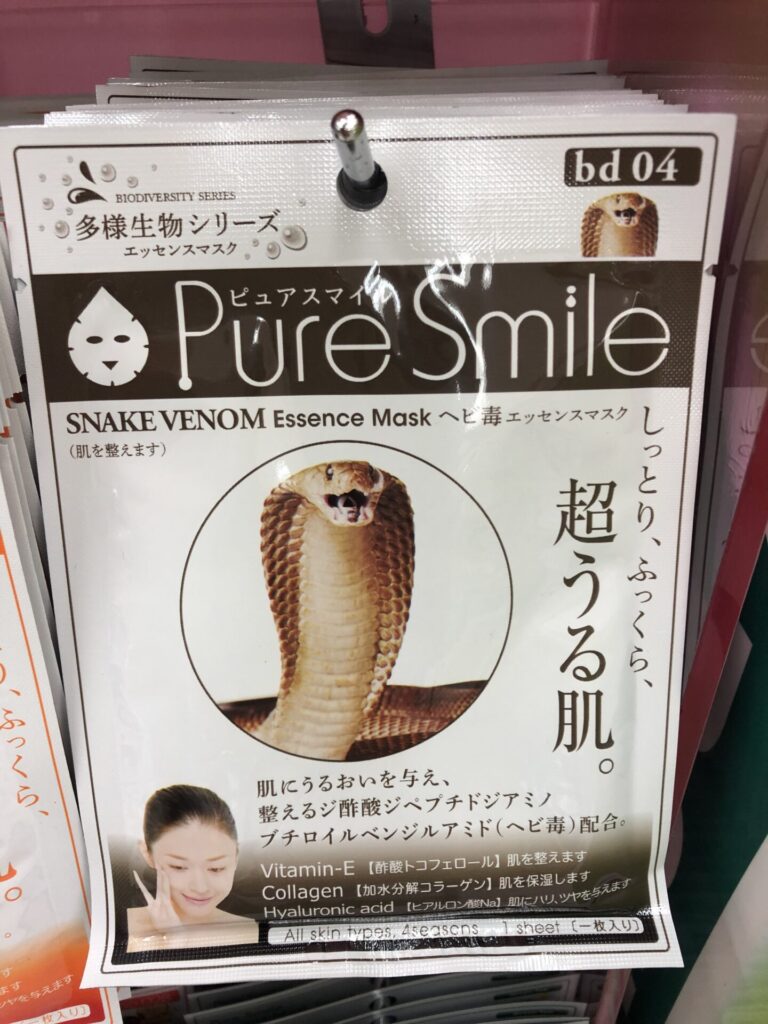
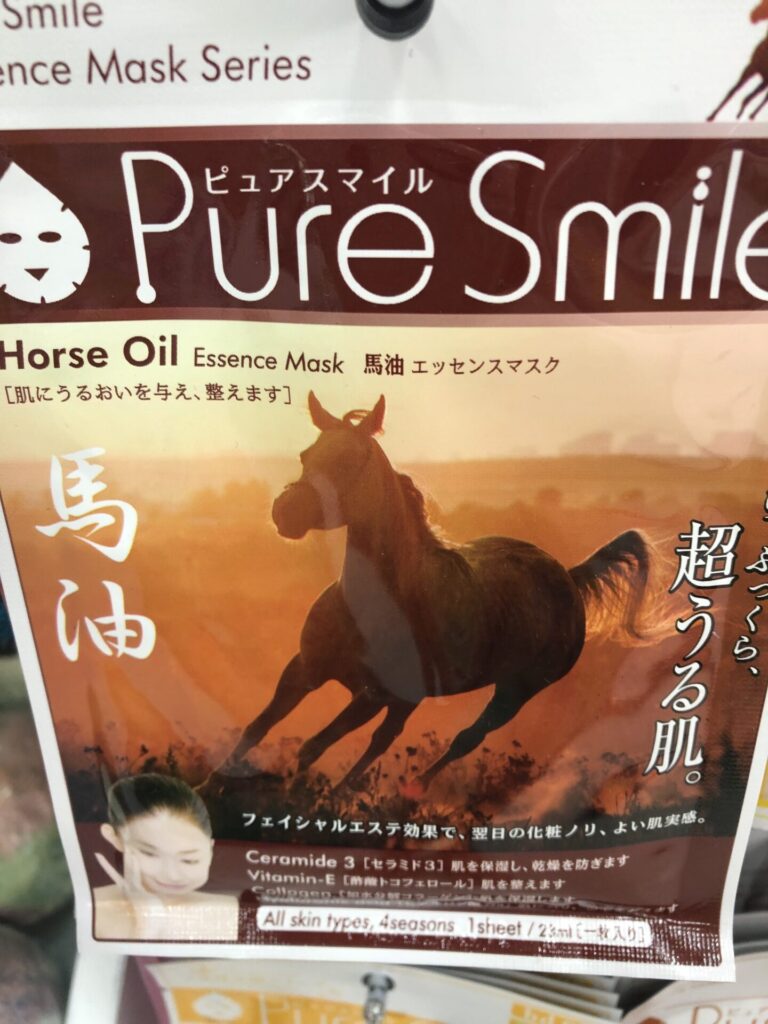
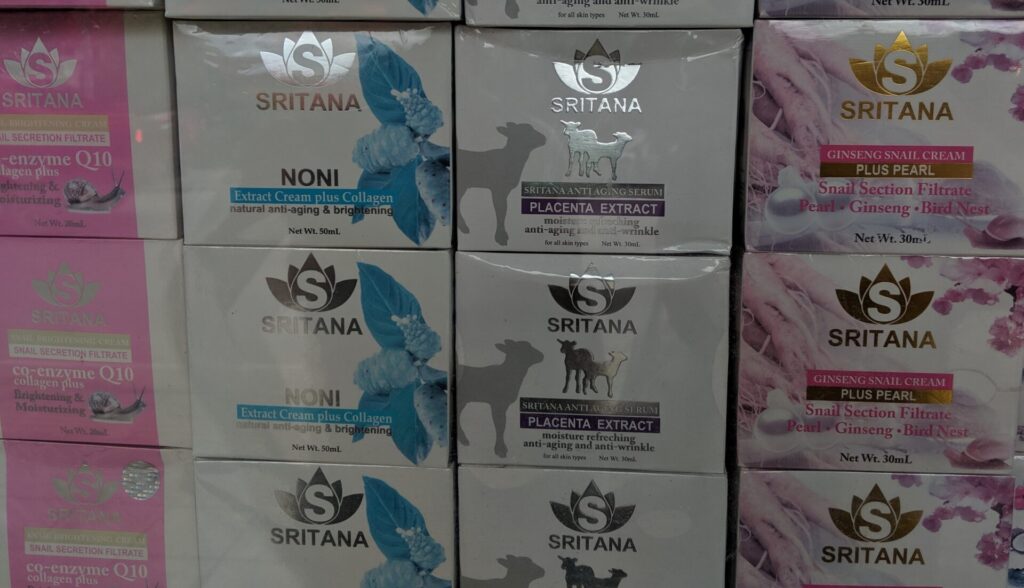
You can’t trust labels or signs
There are so many market products that are labeled as handmade, but it’s nearly always just a marketing gimmick. Some of these “handmade” products are at every market in multiple cities. It’s probably not something someone visiting for a few days or a week would catch, but it’s obvious when staying longer term. Unless I’m witnessing the craftsmanship first hand, I’m skeptical of most of these claims. It’s not limited to market items either. We bought “homemade” peanuts at the convenience store that despite being delicious, were obvious factory products.
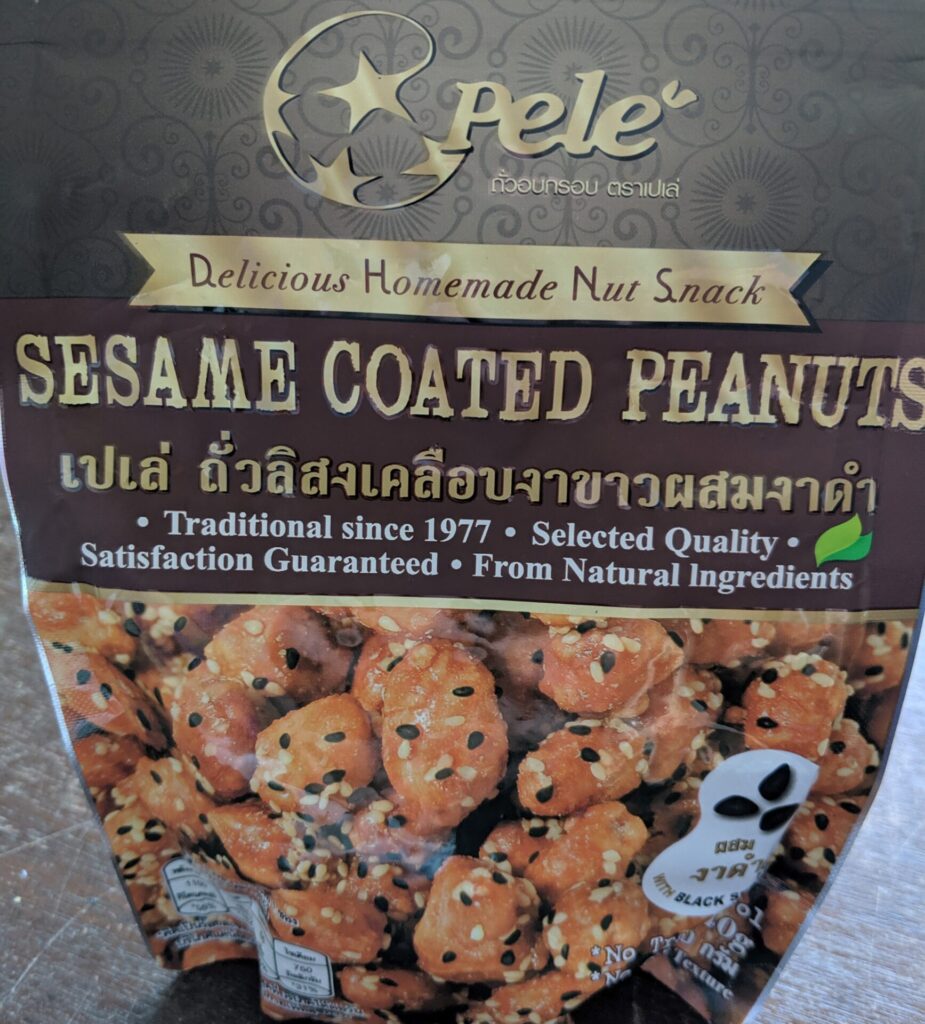
Community trash cans
Especially on the islands, people do not have private trash service. Instead, there are community trash cans along the side of the main roads that anyone can use. When your trash is full, you just carry it up to the trash can. If the trash can itself is full, you just pile it beside the can. Sometimes this can make for some ugly conditions, which is quite the contrast from the abundant natural beauty throughout the country.
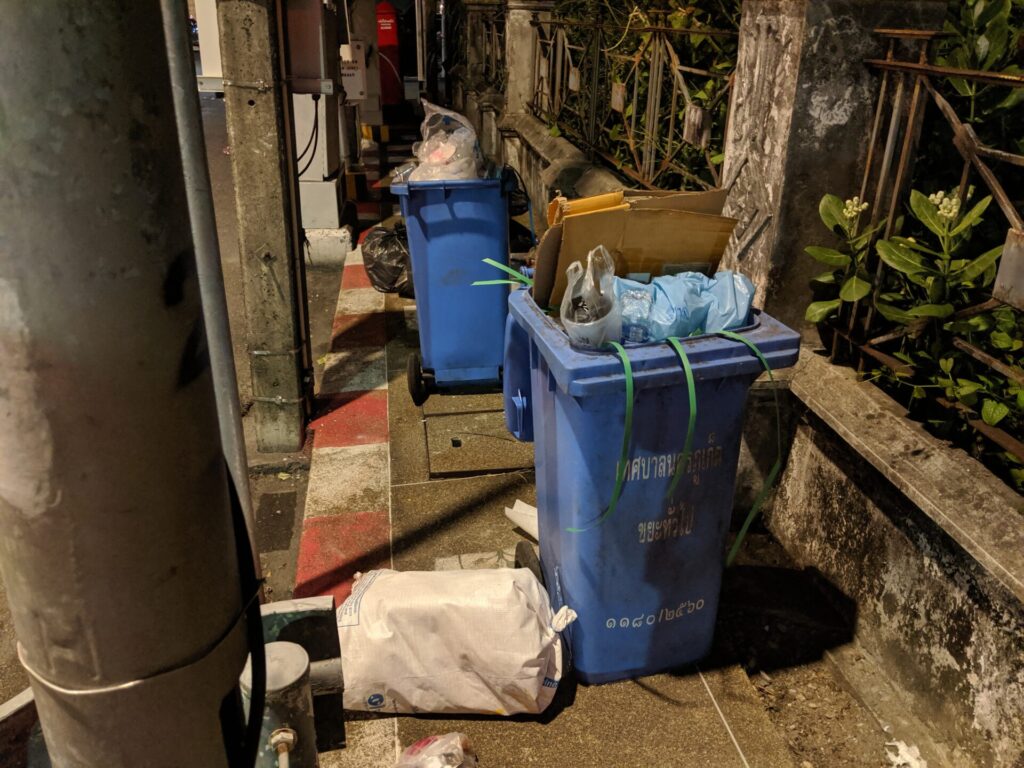
There are very few gas stations
Even in Bangkok with all of its traffic, we saw only a couple of gas stations. On the islands, they were even more sparse. There is still plenty of gas for sale, however. Vendors pour it into old liquor bottles and sell it on the side of the road at only a slight premium. It’s even full service, as they have a funnel that they use to fill your scooter for you.
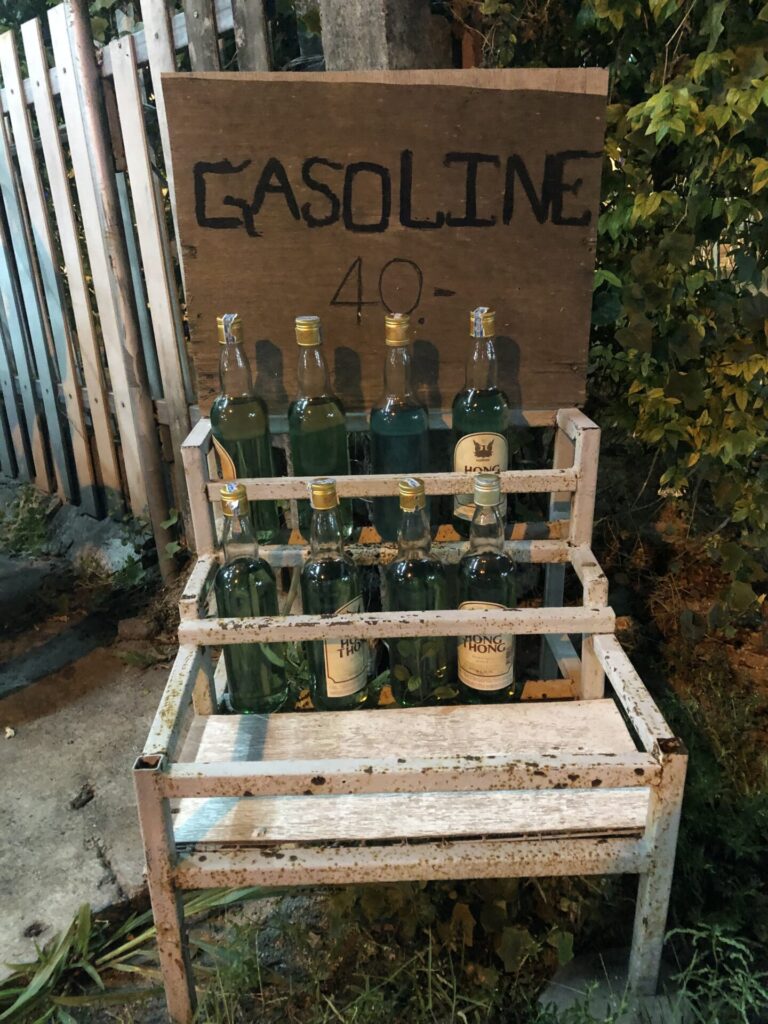
People like weird flavored chips
There are 7-Eleven stores everywhere, with some blocks having more than one. In addition, there are other competing mini marts. They all carry a wide selection of chips, mostly in flavors that I never knew existed. Many are tailored specifically to Thai tastes, as literally written on the bag.
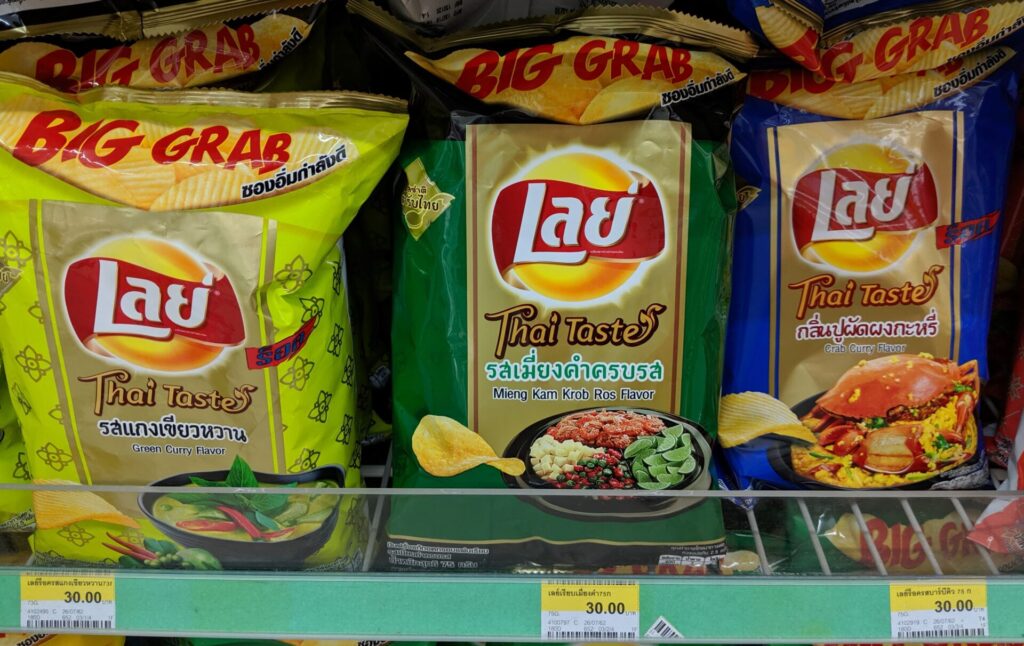
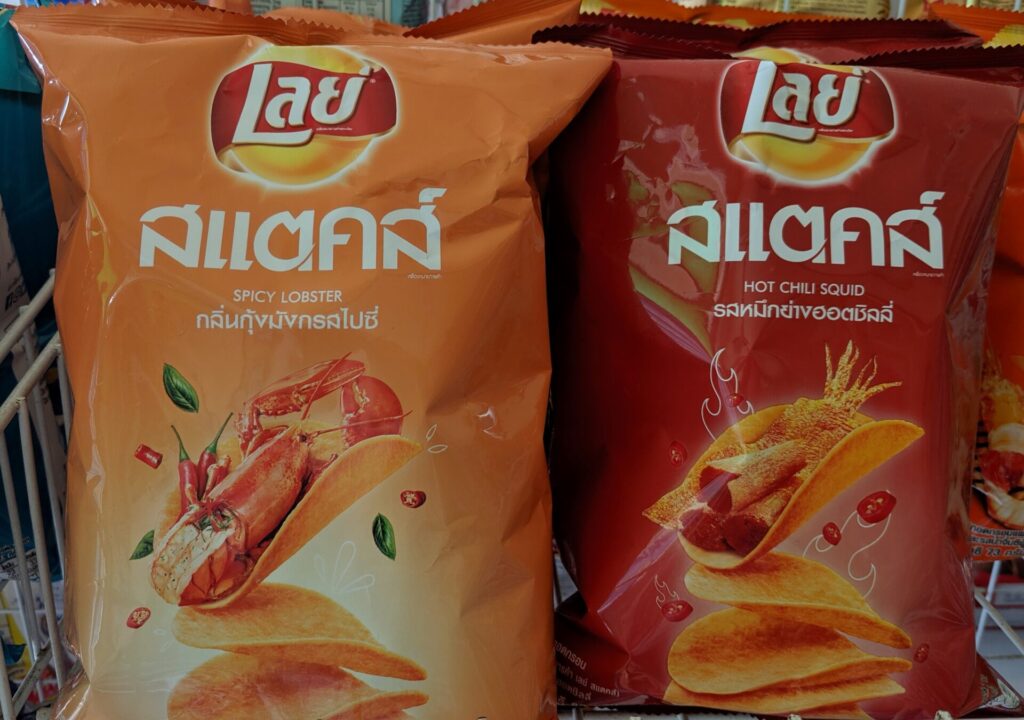
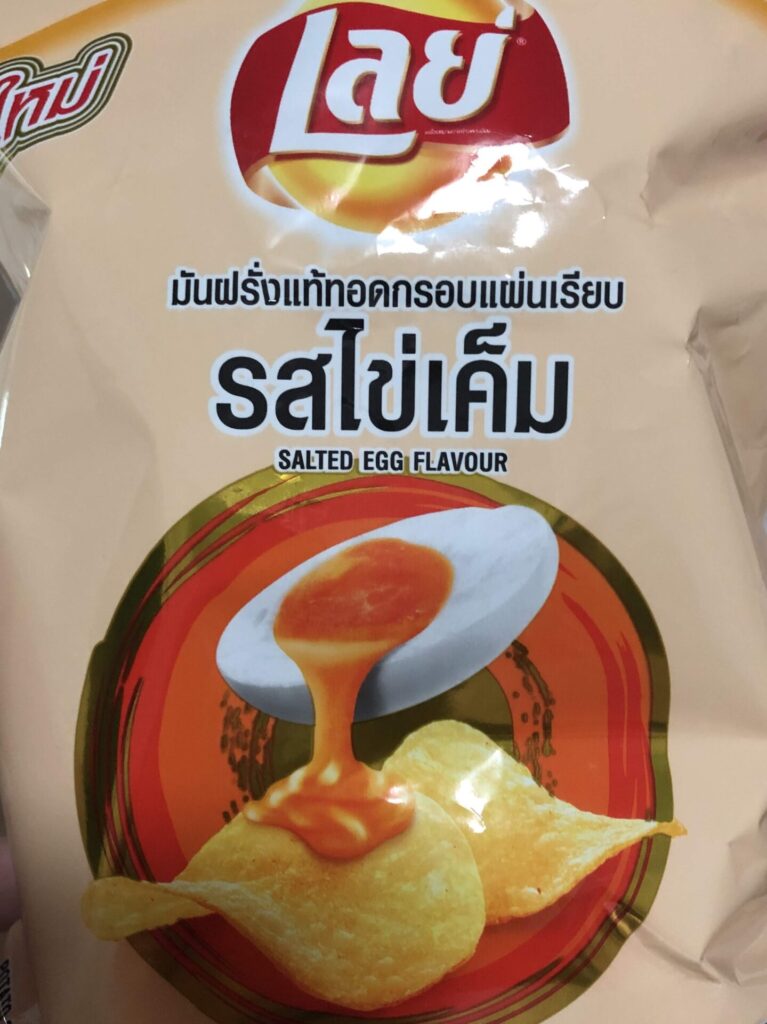
They show cockfighting on TV
We happened to have cable TV in our condo at Kata Beach. We almost always just stream our own content, but Katie happened to be flipping through the channels one morning out of curiosity. That’s when we found out that cockfighting is not only still alive and well, it’s popular enough to be televised. That was quite the surprise. Needless to say, we didn’t watch to the end.
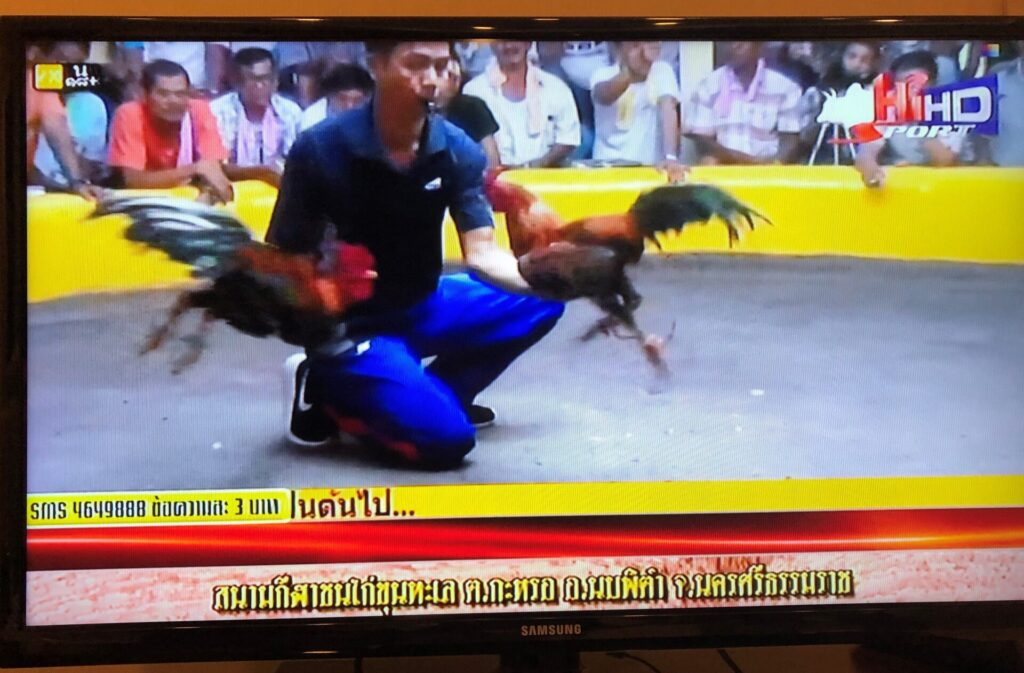
I went to malls and even enjoyed them
In the US, I’d rather poke myself in the eye with a sharp stick than go to a mall. There’s nothing that I would ever need that would necessitate me setting foot into a place where people think shopping is a hobby. Yet in Thailand, I found myself strangely drawn to them. They have strong air conditioning, large food courts, and restrooms that are likely both free and clean. Plus, no one is asking you to look at their goods or buy directly from them, which is a nice change from some of the market shopping.
There are lots of great T-shirts
We found numerous t-shirts that were hilarious in one way or another. Katie even bought one that said “It’s Vacation Time Let’s Enjoys It” with a nice picture of a sun, beach and palm tree. I liked a bunch of them, but I decided only to model them while leaving them for someone else to enjoys it.
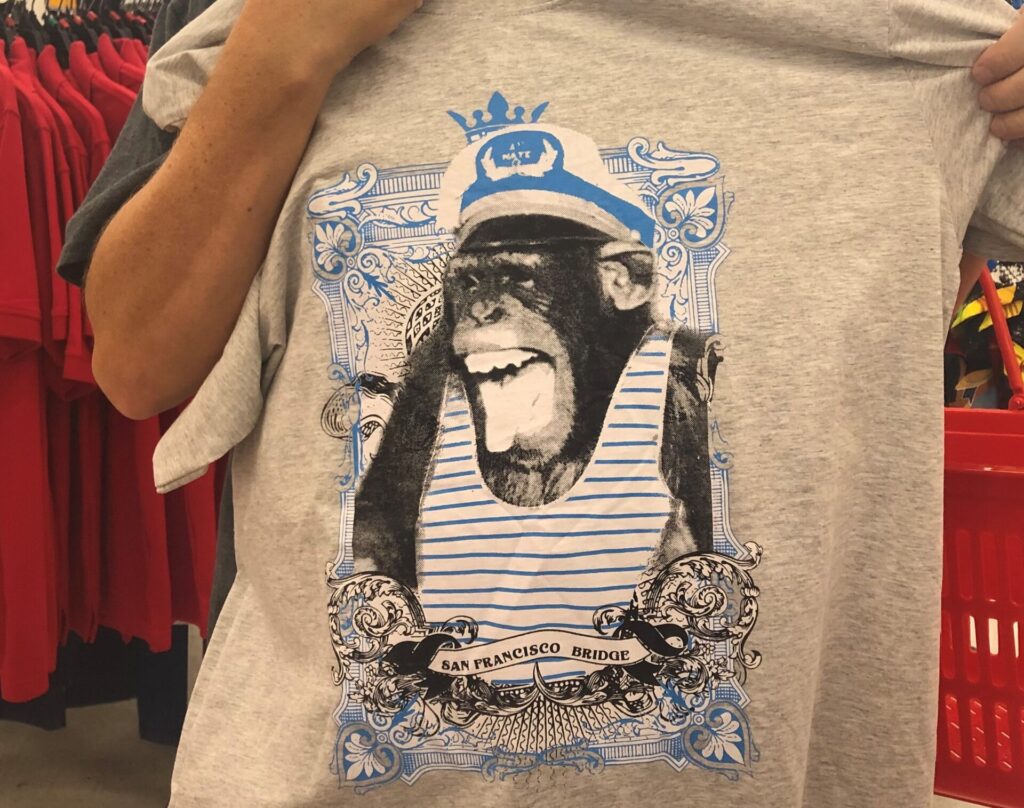
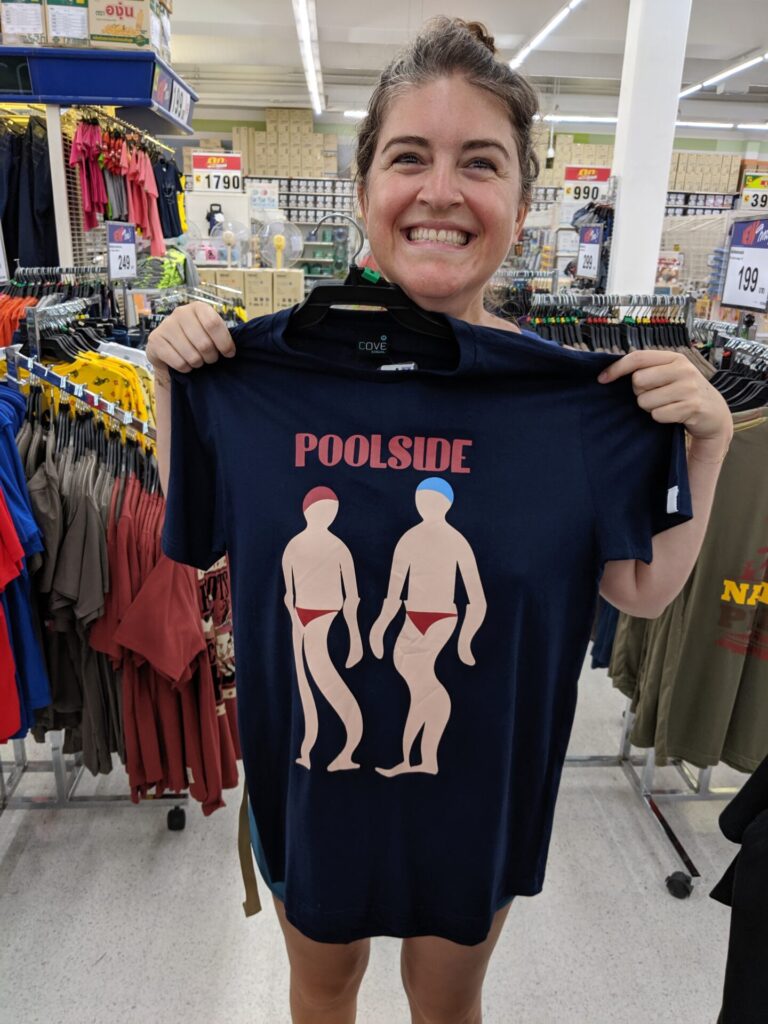
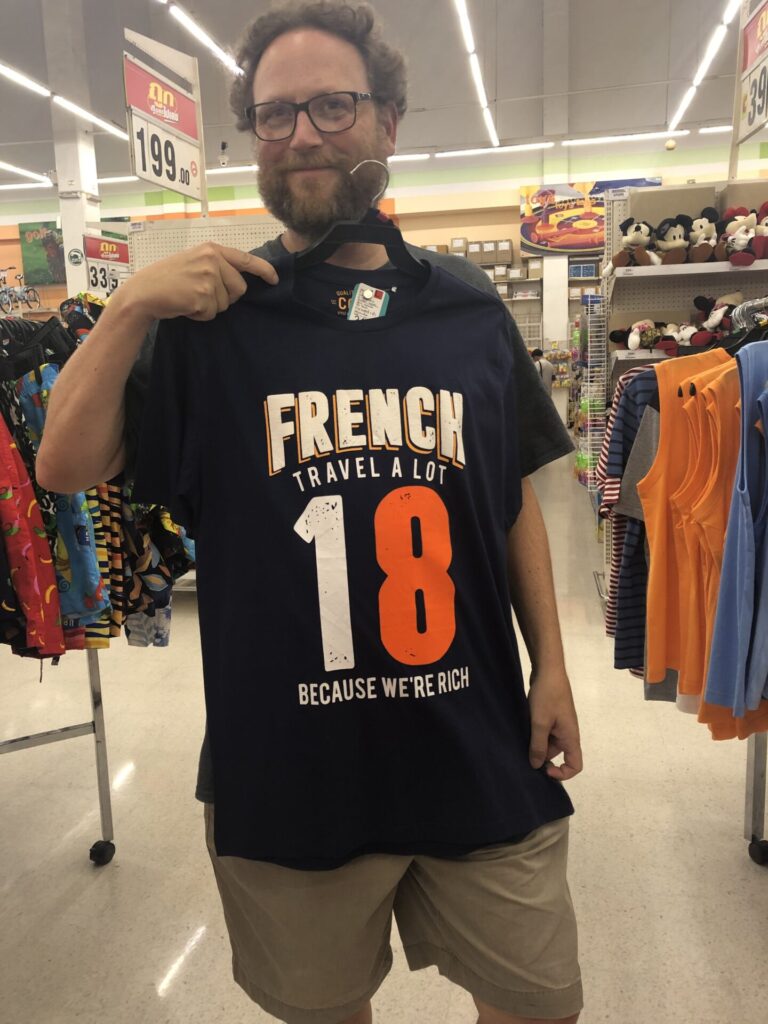
Alcohol is way more expensive than I expected
Draft beers at restaurants were priced around $5-6. Six packs of tall boys were $10. We’re not talking craft beer either. This is just generic hot weather lager. Liquor was similarly expensive, with 750ml bottles of Absolut vodka or Jack Daniels whiskey running $40 or more. Local spirits existed, but the quality was not great. And the high prices really stand out compared to how cheap everything else is. For comparison, I’m writing this post in Siem Reap, Cambodia where there are countless bars and restaurants that offer $.50 draft beers.
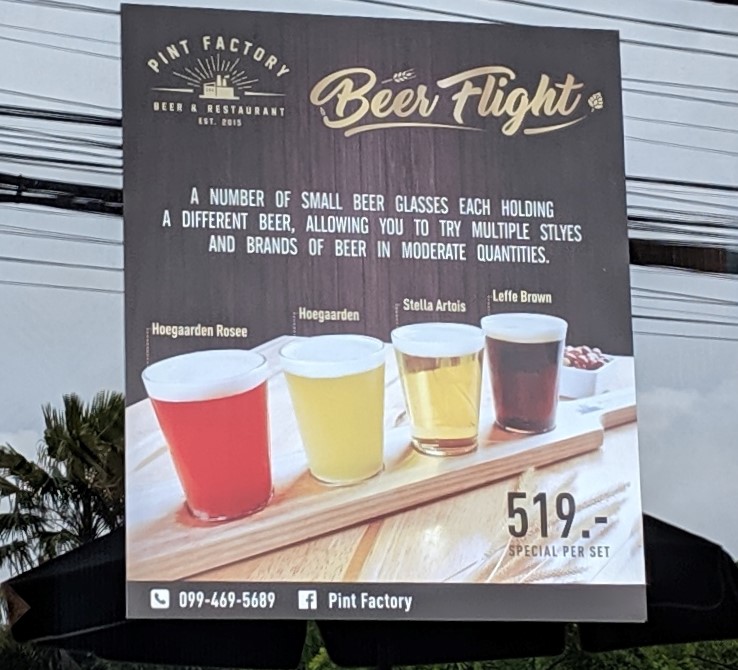
The pricing wasn’t the only thing that was strange either. They also had odd restrictions on sale times. Beer sales could begin at 11am, shut down from 2pm-5pm, and then start up again until midnight. Guess what time we would normally want to buy a cold beer on the way back from the beach? That’s right, about 3:30pm. I found this restriction was even more annoying than the inflated pricing.
We came in well under budget without even trying
The most important of all the lessons I learned was that we were able to live a very good life and have a lot of fun for much cheaper than I imagined. Before starting this nomadic travel adventure, my proposed budget was $3000/mo. This is roughly broken down into about $1000/mo on rent, $1000/mo on food and entertainment, and $1000/mo on everything else. At the time the plan was made, that seemed pretty lean. We were living in Silicon Valley after all, so while we know things are a lot cheaper elsewhere, it was a bit hard to internalize it.
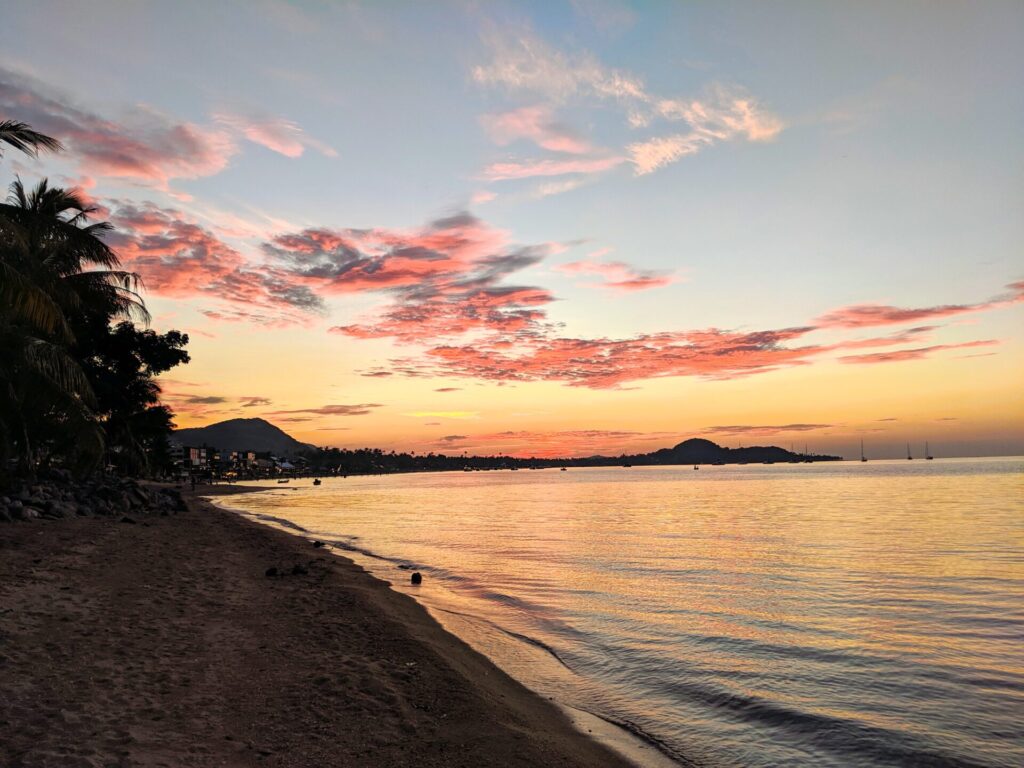
While beer was expensive, nearly everything else was crazy cheap. We could go to the produce market and leave with all we could carry for $6 to $7. When we ate street food at a night market, we could both walk away with full stomachs for about the same amount. In most spots, we had numerous apartment rentals to choose from that were well under our $1000/mo threshold. As such, we spent only a little over half of our budgeted amount. We spent $929.38 in Bangkok, $840.47 in Koh Phangan, $774.68 in Koh Samui, and $844.82 in Phuket for a total of $3389.35 over two wonderful months.
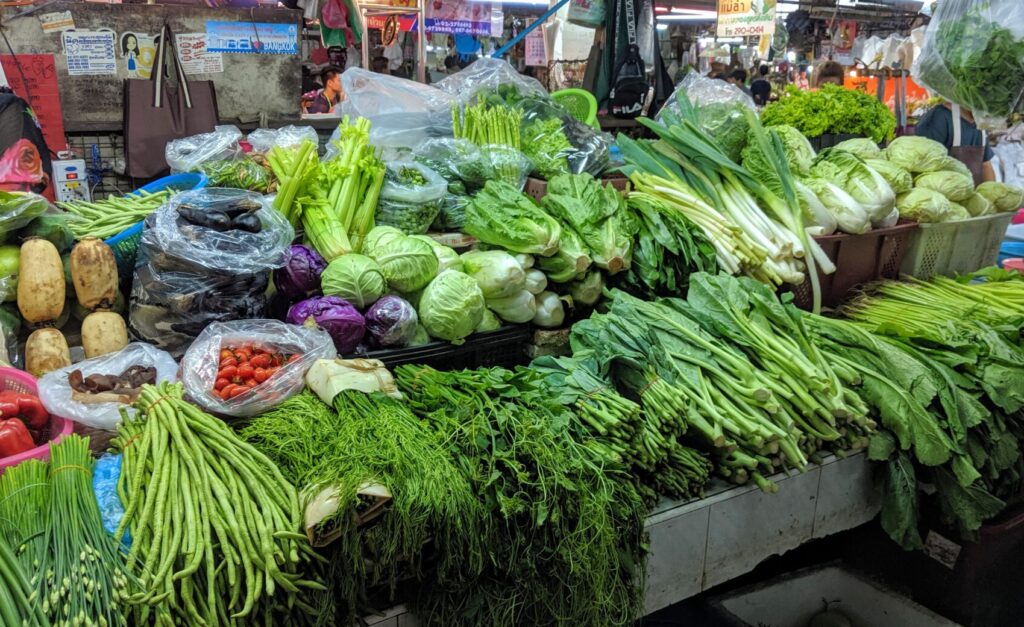
Naturally I recognize that we didn’t have any one time “chunk” expenses like replacement electronics, doctor visits, or even a full priced transcontinental flight. But there’s a ton of slack in our budget where we could absorb costs like these and still be more than fine. We were barely paying attention to our spending while there and certainly didn’t deprive ourselves of anything we wanted. There’s even room to spend less if necessary, especially by cutting back on some of the luxury spending like alcohol or rentals with super nice views. That makes me even more confident that we will be able to weather the next recession without worrying about our spending. After all, the most important lesson I’ve learned is that retirement would be no fun if money were a constant concern.
LOVE IT!! Hilarious and interesting lessons. I feel like I was there with you. Congratulations on being so under budget while living an awesome life! I would love to hit you up for more info on these awesome houses you stayed in (lizards and all 😉 ). I’m planning my 2021 Thailand trip now and getting excited (I like to plan ahead…) Hope you’re having a great day!
Thanks! This was really just an excuse to dump some of these random pics into a post, because I can’t bring myself to make a standalone post just about chip flavors. lol
I’ll send over my Airbnb links. Better get that booked before they’re all sold out for the next 16-20 months. 🙂
Great to read your Thailand experiences Eric!!!Nice pictures …
Thanks Lakshman! Hope things are going well for you too.
Wow! Learned a lot! Very entertaining, too!❤️
Glad you liked it Beth. For once, I get to be the educator! hahaha
Eric, I truly enjoy reading your posts. I feel like I’m there with you guys. I’m learning a lot from your experiences and keeping a mental note of some of the highlights you mention for when I may one day vacation there. I always look forward to reading about your next adventure and I’m glad to hear that you are enjoying retirement. Enjoy!
Thanks Greg! I appreciate that and will keep ’em coming.
Interesting description of your most recent adventures. Just curious about how you’re dealing with language issues. Once off the beaten path, I assume you’re dealing with languages and dialects with which you’re unfamiliar. How do you manage? And have you encountered any anti-Americanism? Thanks for the interesting posts so far.
Hi George,
We really haven’t encountered many issues as far as the language barrier. Most people speak at least some English. If we find a local seller at a market that doesn’t, they all have a calculator so you can point to what you want and they’ll type the price into the calculator. All of the restaurants and food stands are used to dealing with not only English speakers, but lots of Chinese, Russian, and others, so their menus nearly always have pictures. As you can see from the photos in this post, a lot of the products available in stores have descriptions in both English and Thai. And if all that fails, there’s always Google Translate. As such, it’s been really easy.
I don’t think anyone really cares that we’re American so anti-Americanism isn’t anything we’ve encountered. The few people that wanted to know were mostly just impressed at how far we’d traveled to get there or were happy to share with us that they’d been to New York or LA. So no issues there, either.
I truly enjoyed reading your story. I’m a traveler and a budgeter. You fulfilled both. I hope your mom continues to share your adventures with us. Travel is intensified living..
Thanks Jill. If you’d prefer not to rely on my mom sharing it, you can sign up for the Bonus Nachos Mailing List and I’ll send you an email every time I publish a new post. If you’re on mobile, it’s at the very bottom of every page.
I live here and there are reasons for the expensive beer. The most important reason is that government is protecting big beer companies by imposing high import duties, this enable local beer companies to hike prices. Another reason is that to get a brewing license you must produce massive quantities which means there are no small local brewers thats competing with the big brewers. Many Thai craft beer are produced in the country, it then gets exported and then reimported to be within the law. By that time the beer costs $ 7 for a 330 ml bottle.
As for beer selling times its called the kings hours and was an attempt to curb drinking during working hours. These hours are strictly kept in the formal trade but in the informal trade you can buy any drinks at any time. The mom and pop shops are all over and sell beers at about the same price as regular shops. For example a case of 12 x 630 ml Chang beer is only 30 US cents more expensive at our mom and pop shop than Tesco Lotus.
Hi Ron,
Thanks for the comment. We recently spent 3 months in Malaysia before returning to Thailand for a month. That’s made me a lot more appreciative of Thailand’s laws and prices than I was before. 🙂